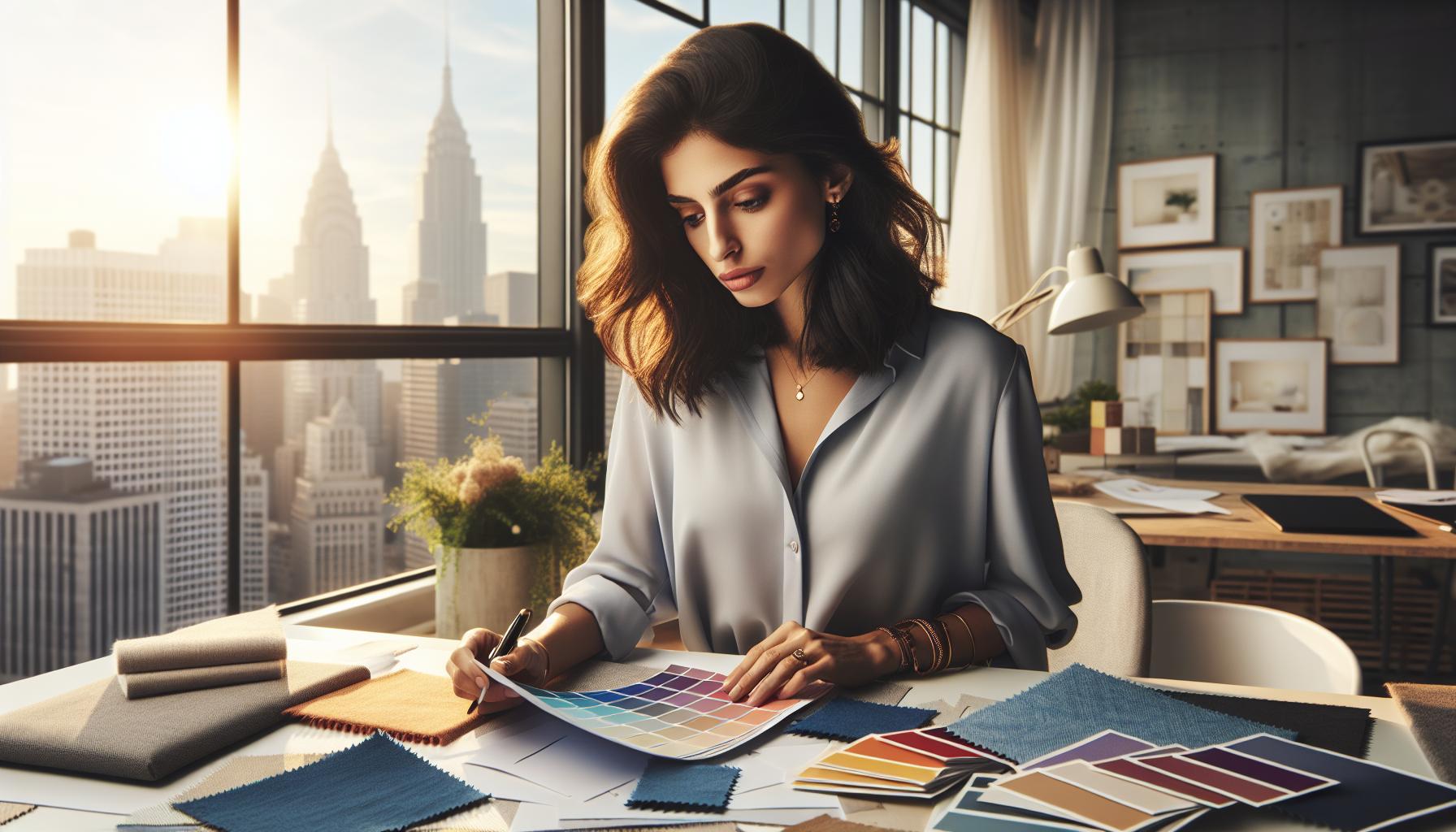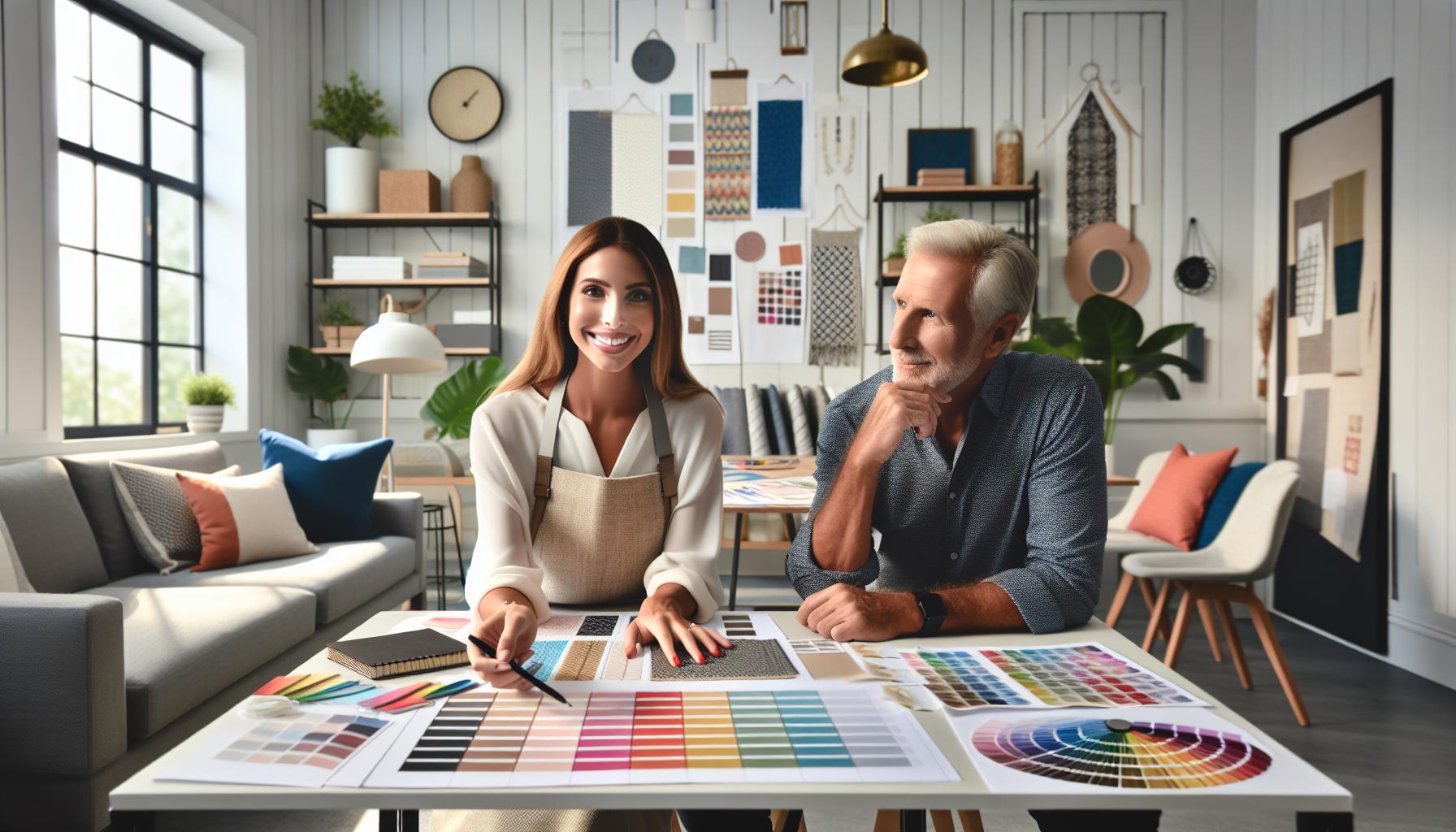Interior designers play a crucial role in transforming spaces into functional and aesthetically pleasing environments. They blend creativity with technical knowledge to enhance the look and feel of homes, offices, and commercial spaces. By understanding their clients’ needs, they create designs that reflect personal style while ensuring practicality.
From selecting color palettes and furnishings to optimizing layouts, interior designers manage every detail of a project. They collaborate with architects, contractors, and suppliers, ensuring that every aspect aligns with the overall vision. Whether it’s a small apartment or a sprawling corporate office, these professionals bring expertise and innovation, making them essential in the world of design.
Key Takeaways
- Role of Interior Designers: Interior designers blend creativity with technical skills to create functional and aesthetically pleasing spaces, catering to both personal style and practicality.
- Key Responsibilities: They engage in space planning, color selection, material specifications, furniture arrangement, lighting design, and project management to ensure cohesive and effective design outcomes.
- Essential Skills: Successful interior designers possess strong communication skills, creativity, and technical proficiency, enabling them to innovate while adhering to design principles and building regulations.
- Client Collaboration: Interior designers conduct thorough consultations with clients to understand their needs and present design concepts through visual aids, facilitating effective feedback and collaboration.
- Current Trends: Sustainable design practices and technology integration are key trends in interior design, focusing on eco-friendliness and enhancing user experience through smart home solutions.
- Impact of Design: The expertise of interior designers significantly contributes to the functionality and experience of residential, office, and commercial environments, making them crucial in the design industry.
What Interior Designers Do
Interior designers enhance spaces by blending creativity with functionality. They analyze clients’ needs and preferences to create designs that reflect personal style while ensuring practicality.
Interior designers engage in various tasks, including:
- Space Planning: They evaluate the functionality of spaces, determining optimal layouts for furniture and fixtures.
- Color Selection: They choose color palettes that align with the client’s vision and create harmonious atmospheres.
- Material Specifications: They select materials for flooring, walls, and furnishings that meet aesthetic and functional requirements.
- Furniture Arrangement: They design furniture placements that maximize flow and usability within a room.
- Lighting Design: They incorporate lighting strategies to highlight features and enhance the ambience.
- Project Management: They oversee project timelines, budgets, and procurement processes, ensuring seamless execution.
- Collaboration with Professionals: They work closely with architects, contractors, and suppliers to guarantee cohesive project outcomes.
Interior designers possess essential attributes, including strong communication skills, creativity, and technical knowledge. Their expertise significantly influences the experience and functionality of residential, office, and commercial environments.
Key Responsibilities of Interior Designers

Interior designers play a crucial role in creating functional and aesthetically pleasing spaces. Their responsibilities encompass various tasks that ensure design projects meet client expectations.
Space Planning
Space planning involves the strategic arrangement of furniture and elements within a given area. Designers assess the dimensions of a space to determine optimal layouts. They apply principles of ergonomics and functionality to create an efficient flow. Interior designers also ensure compliance with building codes and regulations during the planning phase. Through detailed floor plans and site specifications, they maximize usable space while considering client preferences.
Color and Material Selection
Color and material selection significantly influences the overall atmosphere of a space. Designers evaluate and select color palettes that align with the client’s vision. They consider aspects like lighting, mood, and existing furnishings. Material selection involves choosing appropriate finishes, fixtures, and furniture that enhance durability and appearance. Interior designers remain current on trends and materials, ensuring selections are both stylish and functional. The right combinations contribute to a cohesive design that reflects the client’s identity.
Skills Required for Interior Designers

Interior designers rely on a combination of skills to transform spaces effectively. These skills include creativity and innovation, along with technical proficiency, which is essential for successful project execution.
Creativity and Innovation
Creativity drives interior designers to conceptualize unique and functional spaces. He or she develops original design ideas that capture client visions while considering stylistic trends. Designers generate innovative solutions, helping them address specific challenges within a space. They often experiment with colors, textures, and layouts, ensuring projects remain fresh and engaging. This ability to think outside the box allows for tailored designs that enhance user experience.
Technical Proficiency
Technical proficiency encompasses a range of competencies vital for interior designers. Designers must understand architectural principles, which guide them in space planning and compliance with building codes. Familiarity with design software, such as AutoCAD and SketchUp, enables designers to create detailed plans and renderings efficiently. They also need knowledge of lighting, materials, and furnishings, which informs choices that align with both aesthetics and functionality. Additionally, understanding project management tools ensures that designers stay organized and communicate effectively with stakeholders throughout the design process.
How Interior Designers Collaborate with Clients

Interior designers play a crucial role in understanding and aligning with client expectations throughout the design process. By establishing clear communication channels, they ensure that the client’s vision is accurately translated into a functional design.
Understanding Client Needs
Interior designers conduct in-depth consultations with clients to gather essential information about their preferences, lifestyle, and requirements. They ask targeted questions that address specific functionalities, desired aesthetics, and budgetary constraints. Designers assess space usage and gather insights into the emotional impact clients wish to achieve. By taking notes and documenting client responses, designers create a comprehensive understanding that guides the design development.
Presenting Design Concepts
Interior designers present design concepts through visual aids, including sketches, mood boards, and 3D renderings. These tools help clients visualize the proposed designs and make informed decisions. Designers explain each element and its purpose, ensuring clients grasp how the choices align with their needs. Feedback sessions allow designers to refine concepts based on client input, fostering collaboration. This iterative process enhances client satisfaction while ensuring that the final design resonates with their vision and preferences.
Trends in Interior Design
Current interior design trends emphasize sustainability and technology integration. These trends reflect an evolving approach to creating spaces that meet both aesthetic and functional demands while addressing environmental concerns.
Sustainable Design Practices
Sustainable design practices focus on minimizing environmental impact while maximizing functionality. Designers utilize eco-friendly materials such as bamboo, recycled glass, and low-VOC paints. They prioritize energy-efficient lighting and appliances to reduce energy consumption. Water-saving fixtures also feature prominently in contemporary designs, promoting conservation in bathrooms and kitchens. Additionally, designers incorporate biophilic elements, like indoor plants and natural lighting, to enhance well-being and connection to nature. This approach ensures spaces not only look good but also contribute positively to the environment.
Technology Integration
Technology integration in interior design enhances functionality and user experience. Designers leverage smart home technologies, such as automated lighting and climate controls, to create more efficient spaces. Virtual reality (VR) tools allow for immersive design walkthroughs, providing clients with a realistic view of their future spaces. Advanced design software enables accurate planning and visualization, making communication with clients smoother. Furthermore, designers incorporate cutting-edge materials like smart glass that adjusts opacity for privacy and energy savings. This fusion of design and technology leads to innovative, responsive environments.
Crucial Role in Shaping Spaces
Interior designers play a crucial role in shaping spaces that are both functional and aesthetically pleasing. Their ability to blend creativity with technical skills allows them to craft environments that reflect individual client needs while adhering to practical considerations. Through effective communication and collaboration, they ensure that every project aligns with the client’s vision and lifestyle.
By staying attuned to current trends in sustainability and technology, interior designers continue to innovate and enhance the user experience. Their expertise not only transforms physical spaces but also elevates the overall quality of life for those who inhabit them. Ultimately, the impact of interior designers extends far beyond mere decoration, influencing how people interact with their environments every day.